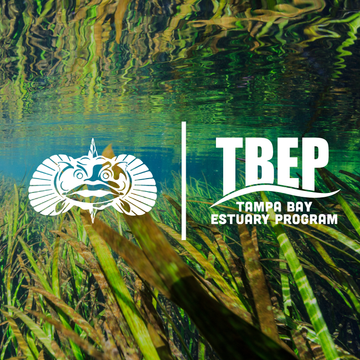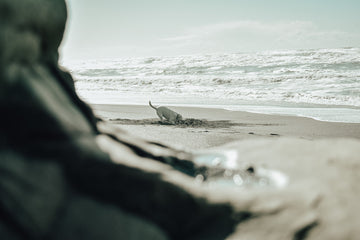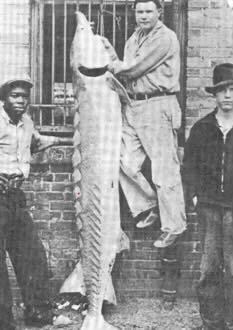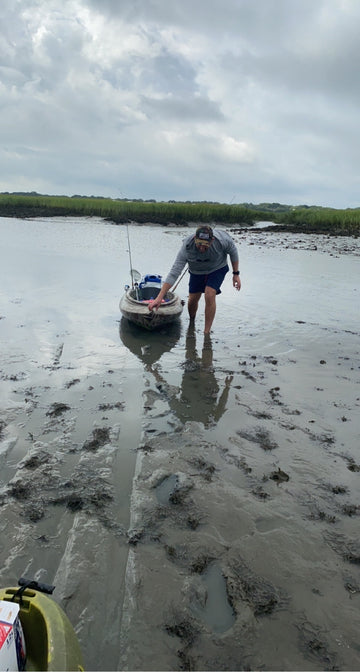Toadfish Donates To Help Save Florida's Seagrass
This year, Toadfish has partnered up with the Tampa Bay Estuary Program to help advance the research of seagrass restoration and ensure that we are investing in actions that improve water quality, providing seagrasses the conditions they need to thrive and reproduce.
Why Seagrass?
Seagrass is the only plant that can live completely submerged underwater and one of the most productive ecosystems in the world. Seagrass provides habitats and serves as food to an incredibly diverse community of animals including endangered species such as manatees and green sea turtles. One square meter of seagrass can generate 10 liters of oxygen a day.
Seagrass has become endangered due to dredging, water quality degradation, and propeller scarring. As we boat through shallow waters, propellers start to destroy these habitats that create ecosystems for the marine life we love. To date, about 29% of our seagrass meadows have been depleted, and 1.5% more are lost every year.
With the release of Toadfish's Seagrass Green Collection, a percentage of every purchase was donated to help aid the efforts in restoring seagrass beds throughout the state of Florida. In this article, we discuss with Jessica Lewis, Program Support Specialist at TBEP, to learn more about the ongoing threats to seagrass and the impact of Toadfish & TBEP's partnership.
How has TBEP's partnership with Toadfish helped spread awareness of the ongoing seagrass endangerment?
Partnering with people from a diversity of backgrounds is important and includes those that enjoy recreation on the water, like those that are likely to look into Toadfish products. It's important that boaters understand their impact and do their best to eliminate propeller scarring in seagrass meadows. Protecting and restoring Tampa Bay takes everyone!
Currently, what are the main threats to seagrass in Florida? What's being done to help?
In Old Tampa Bay, seagrass coverage is at an all-time, historic low. Poor water quality is the main threat to seagrass and includes many factors: nutrient pollution, disturbed water circulation patterns, and warming temperatures, to name a few.
Nutrients are good for plants, right? Sure! But everything in moderation. A classic Florida thunderstorm sends a deluge of stormwater across roads, parking lots, farms, lawns, sidewalks, and roofs straight into the Tampa Bay estuary, carrying fertilizer, animal feces, and other pollutants and excess nutrients with it. Stormwater is the number one source of nitrogen pollution in Tampa Bay, followed by nitrogen from the air (agriculture and burning fossil fuels are the main contributors to atmospheric nitrogen).
Water temperatures continue to rise due to the heat-trapping effect of excess greenhouse gases in the atmosphere. Too much plant food + high temps = a perfect petri dish for harmful algal blooms to thrive. And thrive they do! Pyrodinium bahamense, a microscopic species of algae, have bloomed in Old Tampa Bay every year for the last two decades. While this algae bloom is very different from "red tide," it still has detrimental impacts on seagrass, wildlife, and water quality.
Tampa Bay is crisscrossed with multiple causeways that block the natural flushing of water in and out of the estuary. When water can't move out of the bay and into the Gulf of Mexico, those excess nutrients, blooming algae, and hotter water combine to form a perfect storm of poor water quality that prevents seagrass growth.
How do we turn around this downward trend in seagrass growth? There is no quick and easy answer. Instead, many factors have to be tackled all at once. Take nutrients for example. We know stormwater and air are the major source of nitrogen pollution. The problem must be stopped at the source: prevent the use of excess fertilizer in farms and on lawns; slow rain water down so it has a change to absorb into the ground; use nature-based green infrastructure instead of concrete; stop burning fossil fuels that contribute greenhouse gasses to the air, etc. Major investments must also be made to acquire and restore the dwindling spaces that are available as habitat. The good news is that the Tampa Bay Estuary Program and its partners continue to pull together to do just that. Protecting and restoring Tampa Bay is no small task, and it will take all of us working together in unprecedented ways to achieve these goals.
More information on these topics can be found at tbep.org/water-quality.
How will Toadfish's donation help further TBEP's mission to save seagrass?
Donations are extremely important for protecting and restoring the estuary. These funds will contribute to the Tampa Bay Environmental Restoration Fund which has funded more than $8.7million in projects in just the last decade, all with the mission of improving water quality, restoring habitat, driving meaningful behavior change, and conducting applied research. Find out more - or make your own donation! - at tbep.org/tberf.





